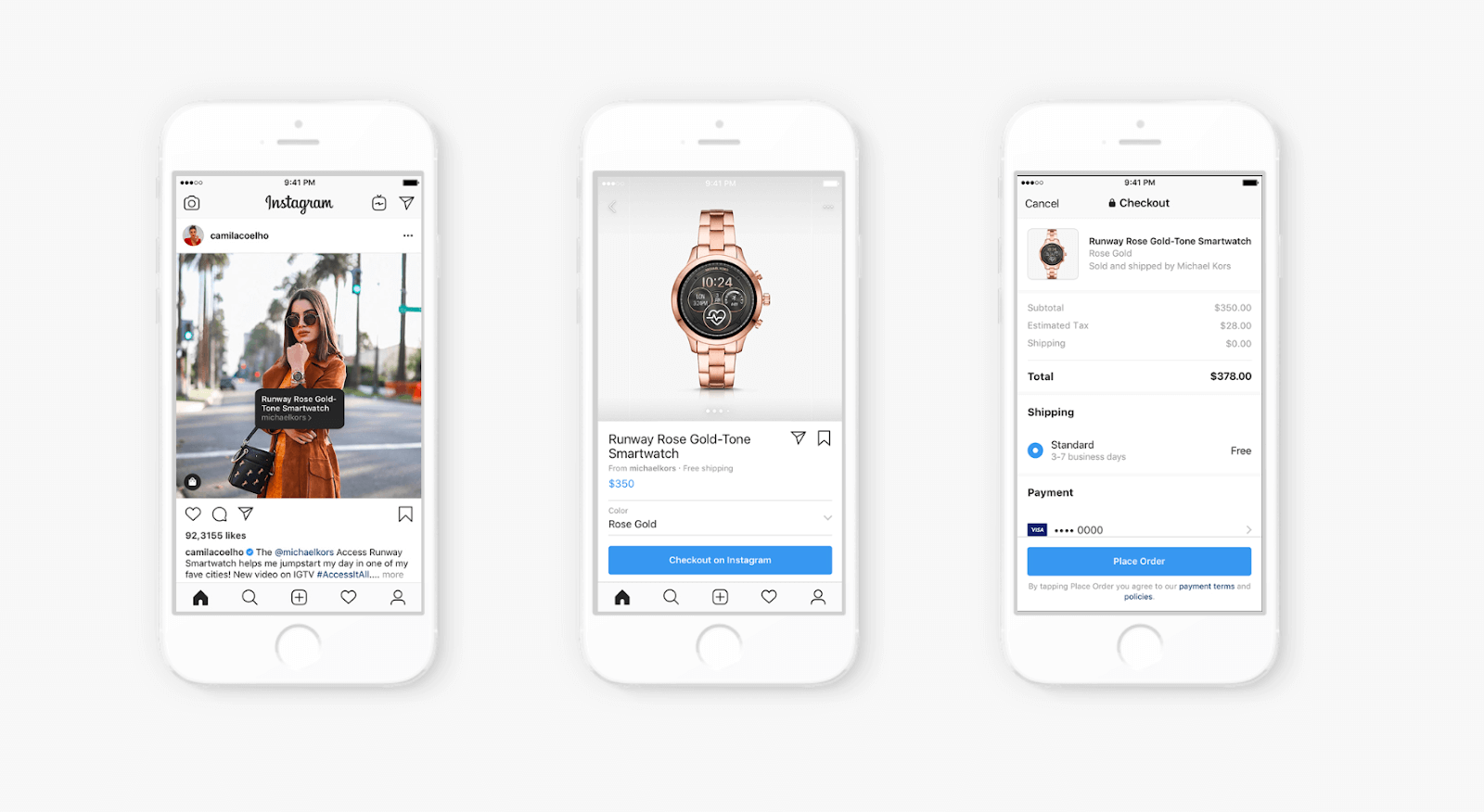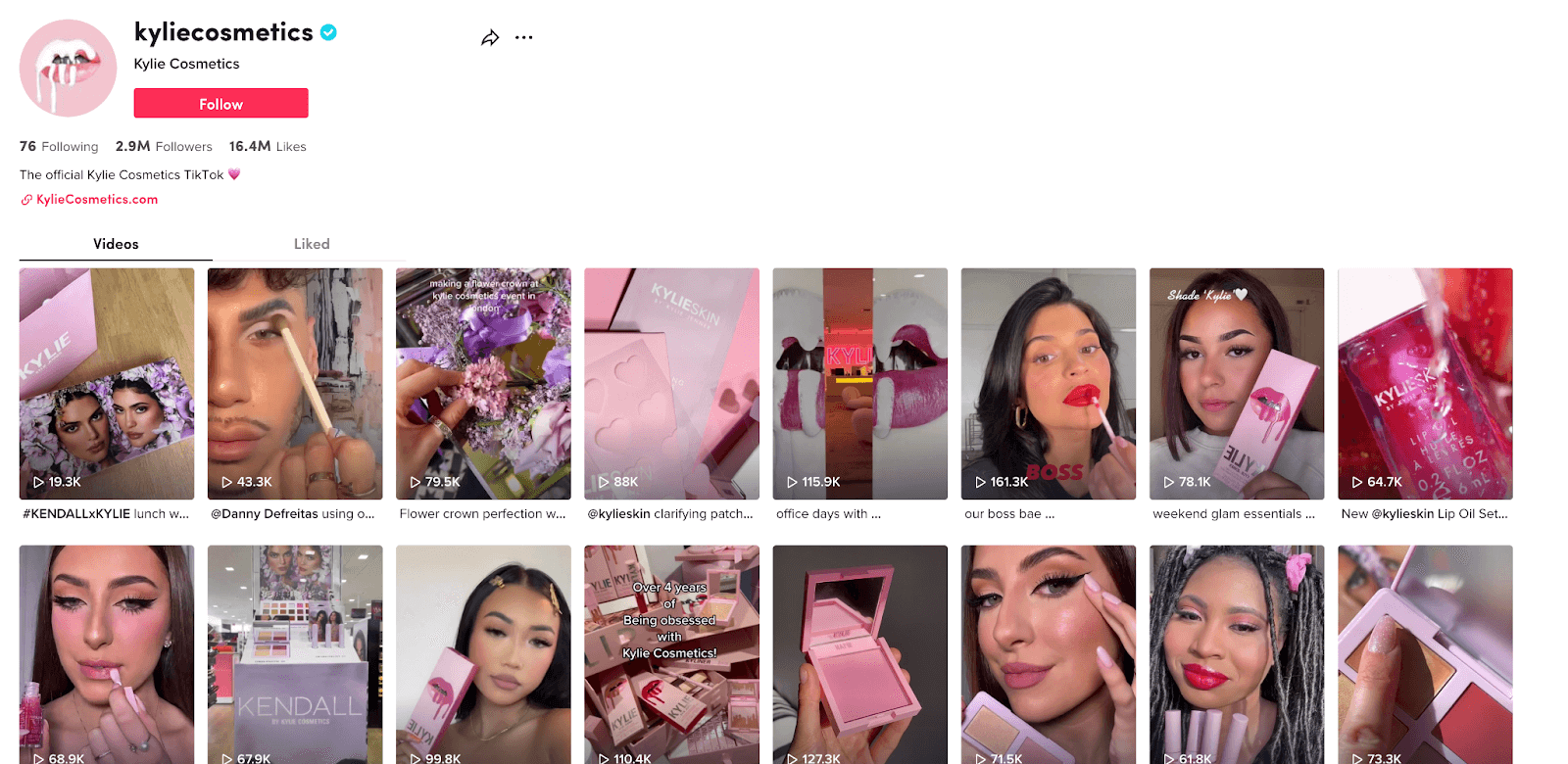We use social media for everything—to catch up with friends, on fashion trends and what new restaurants to eat at.
And now, thanks to social commerce—we now shop on our social media feeds too.
Customers increasingly buy straight from platforms like Instagram or TikTok without visiting online storefronts. Last year, almost half of US adults bought something on social media. Vendors are also cashing in on the rise of social commerce—and for good reason. It's predicted to grow three times as fast as traditional eCommerce and be worth around $3 trillion before the decade's end.
Now is the best time to optimize your channels and cash in on the growing popularity of social commerce.
Here's how 👇
Social commerce is changing the way people shop
Social commerce is when customers buy something directly from a company's social media channel rather than an online storefront.
It allows people to buy an item they like by linking products directly to an online store and adding a tag. If they see something they like, they tap the item, select the size, color, or model they want—and buy it.
Here's what that looks like from the merchant's point of view.
To sell an item on a social media channel, vendors need to add a tag that links it directly to their online inventory or store. Vendors can fulfill orders as usual once the system is set up. Most eCommerce platforms like Shopify and BigCommerce already have integrations for popular social commerce channels like Facebook and Instagram.
The result?
A quicker, smoother checkout process for the customer—they don't have to stop scrolling social media and go to your website to buy something. It's also a winner for vendors, who can reach more customers through social media instead of waiting for them to land on their website.
//[inject:ad-demo]
How to use social commerce in your marketing strategy
Step 1. Pick your platforms and customize your strategy for each channel
Target audiences hang out on different social media channels, and where they spend their time will guide which social commerce channels to invest in.
If your shoppers are between the age of 25-34, Instagram Reels may be a safe bet to get started as they make up over 30% of the platform's user base. If you're targeting a Millennial audience—between 35 and 44—Facebook is the most popular platform for both men and women, so start with a storefront there.
Once you know where your audience is—start strategizing.
💰 Budget. Will you drive sales with paid advertising or use influencers? Every channel is different. Facebook's segmented ads make it easy to target certain demographics and audiences with paid marketing to bring in customers. Instagram has launched a Creators feature where influencers can tag products in their posts and give followers quick access to products they're wearing or using—but it's not cheap. Influencers with less than 10,000 followers can still demand over $193 for a sponsored post. Pick the route that matches your budget and audience.
🙋 Reach. Schedule your social commerce activities like any other marketing task on your calendar and see what's possible with your resources and bandwidth. Are you going to use every tool in the channels toolkit (reels, catalogs, live streams), or are you so stretched for time that you'll need to pick one to focus on?
Next, launch your channels.
Step 2. Link your social platforms and domain to eliminate friction
The social commerce channels worth investing in are also easy to integrate into your tech stack.
For example, Instagram has made it easy to add tags to products on reels, IGTV, and stories so customers can shop instantly. And thanks to the rollout of Instagram Checkout, shoppers can now buy products in seconds without leaving the platform.
Your eCommerce platform will determine how easy it is to link your existing domain with your social media channels.
Check out what you need to do here on Shopify to connect your social channels to your eCommerce store.
Step 3: Set metrics to measure revenue and traffic
Like any shift in marketing strategy, it's crucial to pick the right channels to focus on when pivoting to social commerce.
Tracking metrics, revenue, and engagement for each channel will give you an accurate idea if it's a good fit. The number of likes, shares, comments, and live views will tell you how engaged your audience is with your feed and products, but social media metrics can also give you an insight into:
- Where your leads come from. Is TikTok getting more views, but Instagram is where shoppers spend their money?
- Conversion rates. Likes and comments don't replace transactions at the checkout. You need to track conversion rates and how many of your target audience is buying through social media
- Sales percentages. How much of your online revenue comes from social media sales? These metrics will tell you if it's time and money well spent to invest in social commerce or if your target audience prefers to shop directly from your site.
Track everything. Don't be afraid to adjust your Facebook ads budget if the sales aren't there, and invest in TikTok creation if that's the channel your customers are eating up.
So, what channels are hot for selling on social media in 2023? Here's our top 3👇
The top platforms for social commerce in 2023

One of the first channels to launch a social commerce option, Instagram Shopping is a great option for vendors selling physical products.
With 81% of shoppers researching products on Instagram before buying, the platform allows vendors to strike while the iron is hot. All vendors have to do is add product tags or catalogs to their channels, and shoppers can buy the items they want by tapping them.
How it works
➡️ Vendors need to have an Instagram Business account that's linked to a Facebook page to start selling on the platform
➡️ Merchants add shopping tags, collections, and even a separate shop that's linked directly to their store's existing inventory
➡️ Product detail pages make it easy for merchants to include important details like pricing, sizing, and descriptions
➡️ Instagram Shopping can also be linked to paid advertising strategies. Vendors can add product tags to new or existing ads to boost the reach of their shoppable content
Instagram shopping: Natori

When women's fashion brand Natori started using tags and collections on its social media feed—the impact was immediate.
The brand decided to integrate Instagram Shopping to showcase products in a way that felt authentic to its loyal community of followers. And it worked. Natori's traffic from Instagram grew by 1,416%, and the store earned over 100% more revenue thanks to social media sales.
Tiktok

Want access to over 732 million daily users?
TikTok is your answer.
Perhaps the newest channel on the social commerce scene, TikTok Shopping, launched in late 2021. TikTok claims 67% of its users get inspired to shop (even when they weren't looking to) when scrolling the platform. And merchants have a chance to tap into TikTok's unique audience—of its millions of users, 1 in 4 don't use other social media platforms.
However, TikTok shopping is still in its teething stages. It's only open to merchants using Shopify with TikTok for Business account. If you want in (and meet the requirements), you can request early access here.
How it works
➡️ Much like Instagram, TikTok vendors can tag products and link users to information on how they can purchase it
➡️ There will be a separate "shopping" tab in vendor profiles to create storefronts where visitors can view and buy products in-app
➡️ TikTok is planning to launch three ways for vendors to sell on the platform:
- Collection Ads. Swipeable product cards that vendors can customize in their videos
- Dynamic Showcase Ads. A larger product catalog where vendors can store thousands of products and links
- Lead Generation. Similar to traditional lead gen forms, TikTok vendors will collect information from potential customers to use for future marketing campaigns
TikTok Shopping: Kylie Jenner

One of the most famous early adopters of TikTok shopping, Kylie Jenner, uses the platform to spread the word about her brand Kylie Cosmetics.
Although Kylie and TikTok have been tight-lipped about the success of her efforts on the platform so far, her channel has nearly 3 million followers and gets thousands of impressions every day.


Facebook Shops is (arguably) the most comprehensive storefront out of all the social commerce channels.
With nearly 2 billion daily active users, Facebook is a no-brainer for merchants looking to sell to a larger social audience. Vendors can create a completely customizable storefront on Facebook Shops filled with products and collections to entice potential buyers.
Facebook Shops is so versatile and detailed that it can even replace a website storefront—perfect for new merchants looking to keep overhead costs down.
How it works
➡️ Vendors can tag products in Facebook posts, live streams, and catalogs to maximize visibility and sales
➡️ Facebook Shops is full of data. Use it to build custom audiences and create targeted ad campaigns to reach people who have already looked at your products and storefront
➡️ A detailed dashboard gives merchants valuable insight into how their Facebook shop is performing, from best-selling to which marketing method (pages, live stream, catalog) is most effective
Facebook Shops: Pink Tag Boutique

Before Facebook Shops launched, Pink Tag Boutique used the platform to build brand awareness and show off its products to customers.
The boutique now uses Facebook Shops to sell. Thanks to a mix of live shopping, product tagging, and pages, the brand can cover all bases and reach customers wherever they are.
Since they launched on Facebook Shops, Pink Tag Boutique has cashed nearly $50k in sales. The most impressive stat comes from its improved average order value. Buyers spent 66% more on Facebook Shops than those who bought directly from their website.
It's time to make social commerce part of your marketing strategy
Social commerce is growing, and vendors who don't embrace it risk being left behind.
Shoppers are increasingly choosing to buy products straight from an Instagram Story or a Facebook Shop catalog and bypassing online storefronts altogether.
This doesn't mean that eCommerce is becoming obsolete—quite the opposite.
Merchants can now reach more customers across various platforms and capitalize on trends that only happen on social media. An influencer can praise their favorite skincare products, or a friend can tag a new shirt they love and link it back to a vendor's store.
It's time for marketers to realize this huge opportunity. Meet your customers where they hang out on their favorite social media channels, tag your products—and leave them to (happily) shop straight from your feed.

%20(1).png)




%20(1).png)
.jpg)


.jpg)
.jpg)


.jpg)





.png)



.png)





.png)


.png)

.png)
.png)

.png)
.png)

.png)

.png)


.png)
.png)
%20(1).png)
.png)









.png)











.png)
.png)

%20(1).png)

%20(1).png)



.png)


























.png)











































.jpeg)



.png)



























.png)



.png)

.png)

.png)
.jpeg)


.png)













.png)

.png)










.png)












.png)






































.png)



.png)

.png)

.png)
.png)

.png)
.png)

.png)

.png)

.png)




.png)




















